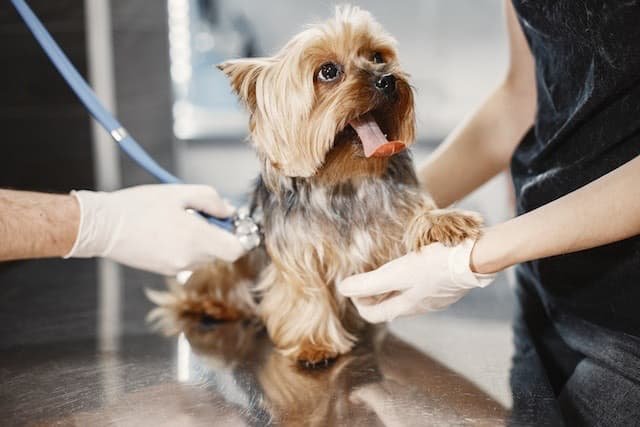TABLE OF CONTENTS
Equine Colic
Equine colic means pain originating from the abdomen. Equines are highly susceptible due to a lack of threshold to pain. Diseases of the alimentary tract of horses that are characterised by abdominal pain are generally referred to as equine colic.
Etiology
Accumulation of intestinal, caecal, or colonic gas; hypermotility and intestinal spasms; impaction of the large intestine, gastric impaction, muconium impaction in newly born animals, gastric ulcers in foals, intestinal obstruction, including intestinal accidents ( volvulus, intessusception, and strangulation). Luminal obstruction and luminal compression, sand colic, spasmodic colic, verminous mesenteric arteritis, ascarid infection, massive strongyle infection, rupture of stomach or intestine, enteritis, and irritant cathartics are the common causes of colic in equines.
Epidemiology
The incidence of colic is high in pastured horses. Colic due to volvulus, strangulation, intussusception, hypermotility, and spasmodic colic are more common in pastured horses at times when strongyle larvae are more active. Colic due to impaction is more common in dry months than in the spring season.
Pathogenesis
Horses suffer from colic frequently. Horses appear to have a low threshold for pain and are frequently beset by minor digestive disturbances that result in a distended bowel. Distention of the stomach or intestines may be static when there is accumulation of ingesta, gas, or fluid, or transient when local periodic distention occurs as a result of spasm and increased peristalsis of intestinal segments. Static accumulations are classified as physical colic, and transient distinctions as functional colic.
Accumulation of food or gas causes GIT distention, which produces stretching of the nerve fibres of the intestinal muscles. This in turn stimulates the autonomic plexus, causing violent peristalysis. This is manifested as colic. In the terminal stages, there will be degenerative changes in the autonomic plexus, leading to atony of the gut. There will be a water and electrolyte imbalance. Secondary cardiovascular effects will lead to shock. Systemic acidosis will be evident. Overdistention will interfere with circulation and respiration and cause death.
Clinical Findings
Pain is manifested by restlessness, pawing or stamping, kicking at the belly, lying down and getting up, laying on the back, groaning, grunting, rolling, sweating, protrusion of the penis without urinating or frequent urination of small amounts of urine, and continuous playing with drinking water without actually drinking any (sham drinking). The posture is often abnormal, usually a saw-horse attitude. Occasionally, in horses with large bowel impactions, a dog’s sitting posture is observed for long periods, often on the way from recumbency to sitting up. Anorexia and depression often accompany these signs.
In the early stages, the pain is usually intermittent, and in the most severe cases, it is almost continuous. The duration of pain may be 10 minutes, and it may repeat after an interval of 10 minutes. Projectile vomiting of intestinal contents through the nostrils is very unusual in horses and is a serious sign suggesting severe gastric distention and impeding nature. Horses also have an increased heart rate with a weak pulse, and develop prolonged capillary refill time, cold extremities, and bright red (vasodilatory phase) followed by dark (vasoconstrictive phase) mucous membranes if the problem is severe and affects cardiovascular integrity.
Evidence of shock is usually present only when the disease condition is severe and involves impactive diseases (volvulus, torsion, or thromboembolism) or advanced visceral distention (extreme flatulence, impaction, or dilation). FB such as sand or enteroliths in the large colon may result in low-grade recurrent colic. When an enterolith is passed into the transverse colon, where it obstructs the bowel, signs of complete obstruction and acute colic ensue. These signs are manifestations of visceral pain, mediated by the sympathetic nervous system. External palpation and pushing on the abdomen usually do not elicit pain unless the affected inflamed or dilated viscus is contacted.
In contrast, parietal pain associated with peritonitis is usually responsive to external palpation. Animals with visceral pain show active signs of colic, and those with parietal pain are usually reluctant to move and have a splinted abdomen. Acute peritonitis occurs in the minutes following the rupture of the stomach or perforation of an ulcer as a result of the immediate irritation of serosal surfaces by acid contents. With a rupture of the colon or rectum, it may take 12 hours or more before peritonitis is clinically apparent.
Diagnosis
Equine colic is diagnosed by following:
- Based on clinical symptoms.
- Based on rectal examination: difficult task due to compromised position of horse.
- Radiography and ultrasonography.
- Laboratory investigation.
Note
Fluid-filled intestine: Flatulent colic
Absence of faeces in the rectum: Impactive colic
Hard pelleted faeces: Obstruction
Laboratory investigation for equine colic
Several blood and serum parameters shows:
- Blood: Usually local peritonitis is indicated by leucocytosis and diffused peritonitis by leucopenia.
- PCV is a good indicator of signs of shock and dehydration. 45% and above are signs of severe dehydration and shock. 55% and above is a bad prognosis sign. Elevated plasma proteins are suggestive of haemoconcentration.
- Elevated serum chloride
- Low plasma bicarbonate(<20mEq/L)
- Elevated blood lactates(>25mg/dl) along with hyponitraemia are important biochemical changes in colic.
- Blood lactate: >75mg/dl – poor prognosis.
Peritoneal fluid analysis:
- Total cell count: >5000 cells/mcl and 75% nucleated cells in peritoneal fluid is confirmatory of advanced stages of colic.
- Visual peritoneal fluid examination may reveal turbidity, foul smell and tendency to clot.
Other parameters:
- Pulse: a pulse of <80/min is favourable; a pulse of >100 is unfavourable.
- Capillary refill time: measured by pressing highly vascularised organ between thumb and fore finger. Ex: tongue.
- Arterial blood pressure: Mean arterial pressure is measured, systolic pressure <80 mm Hg indicates critical condition. (Normal systolic pressure – 100 mm Hg ).
Treatment
- Analgesic drugs form first line of treatment. NSAIDs like Meloxicam and Flunixin Meglumine are good options. Corticosteroids are given to reverse the signs of shock. A dose rate as high as 250 mg/kg Dexamethasone has been given to save the life of horse.
- In impactive colic gut lubricants play a vital role. Mineral oil/Linseed oil/Liquid paraffin are given to soothen and lubricate mucosa @ 3-5 litres by nasogastric tube.
- Doss (Dioctyle sodium sulfo succinate) is a good dispensing agent. It breaks the impacted mass and helps relieve the mass. Given at 0.2 g/kg mass of bwt, a maximum of 25–30 gms.
- Cholinergic drugs like: Neostigmine 10-12 mg (total dose) IM or SC.
- Fluids and electrolytes can be given to improve peristalysis in impactive colic. In the majority of cases, metabolic acidosis is seen, and in such cases, a Ringers lactate/isotonic solution of sodium bicarbonate can be given depending on the base deficit and state of dehydration.
Surgical options when:
- Rectal examination indicates acute intestinal obstruction, strangulation, or volvulus.
- Failure of an efficient analgesic to provide analgesia in 20–30 minutes.
- Visible mucous membranes are turning cyanotic.
- Inflammatory changes in peritoneal fluid.

